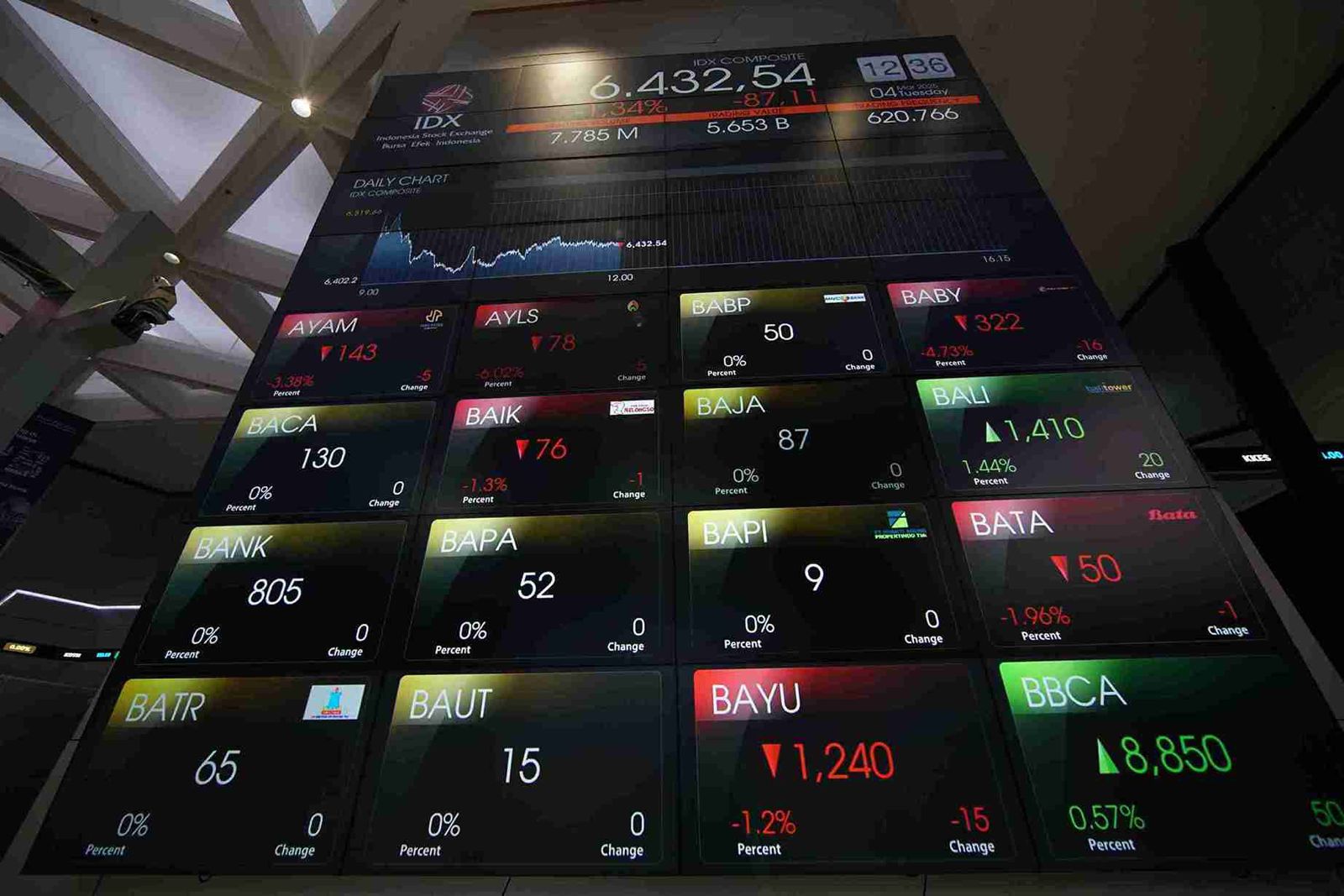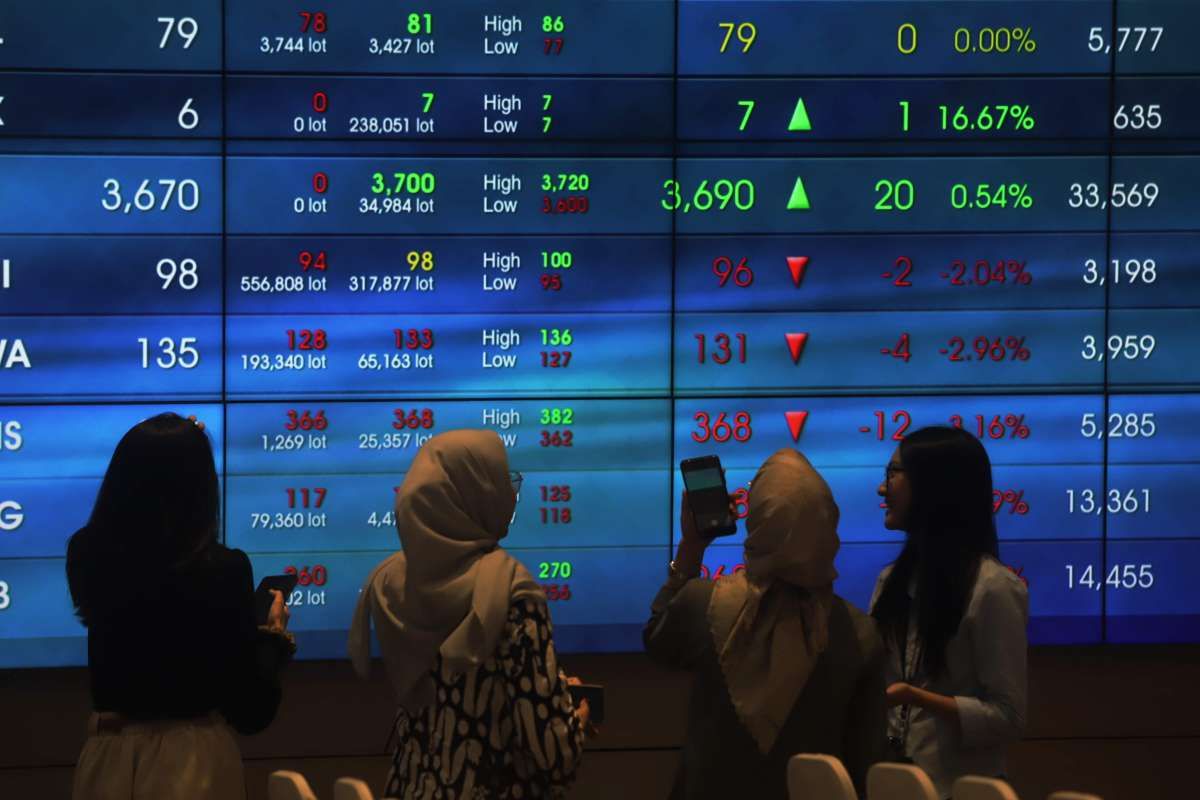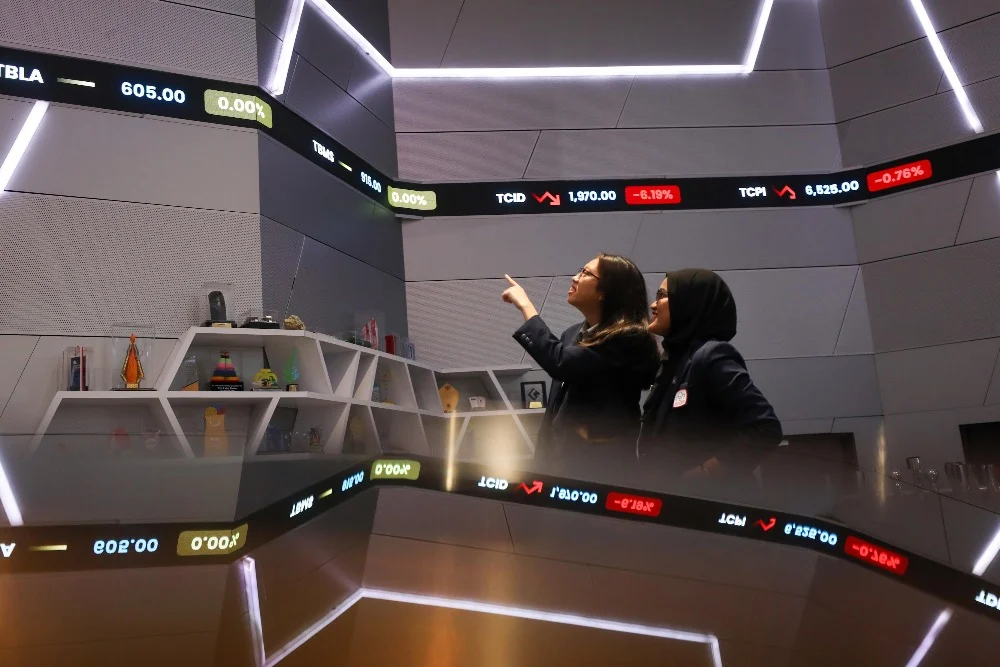IDX Composite (IHSG) Today – March 7, 2025: Market Overview, Key Trends, and Sectoral Insights
The Indonesian Stock Exchange (IDX) is one of Southeast Asia’s largest and most important stock markets. Among its main benchmarks, the IDX Composite, or IHSG (Indeks Harga Saham Gabungan), stands as a key indicator of the market’s performance. On March 7, 2025, the IHSG closed with a notable increase, signaling positive market sentiment amid various external and internal influences. In this article, we will delve into the latest movements of the IHSG, key factors driving the market, notable sector performances, and implications for investors.
1. Overview of the IHSG Movement on March 7, 2025
On March 7, 2025, the IDX Composite Index (IHSG) gained a solid 1.32% or 86.45 points, ending the trading session at 6,617.85 points. This represents a strong upward momentum, as the IHSG’s closing value reflects a positive shift from the previous day. The index traded in a range from 6,531.40 points at its lowest to 6,667.89 points at its highest during the session. The total value of the transactions on the exchange was robust, indicating a healthy level of investor participation.
The trading volume was marked by broad market participation, with 433 stocks advancing, 194 stocks declining, and 328 stocks remaining unchanged by the end of the trading day. This suggests that a majority of the market saw gains, which is indicative of investor optimism, particularly in light of some positive economic developments both locally and internationally.
2. Factors Influencing IHSG Movement
The movement of the IHSG on March 7, 2025, was influenced by several factors, both domestic and international. Investors generally keep a close eye on the broader economic picture, including government policies, corporate earnings, and developments in the global economy.
2.1 Global Economic Conditions
Global economic conditions play a pivotal role in shaping investor sentiment in Indonesia’s stock market. On March 7, international stock markets had shown some positive momentum, which likely impacted the Indonesian market. For example, the U.S. stock market had experienced a recovery after recent volatility, as positive corporate earnings reports and a stabilizing economic outlook had boosted investor confidence. Such movements in global markets tend to spill over into emerging markets like Indonesia.
Moreover, central bank policies worldwide, particularly in the U.S., have a significant impact on emerging market flows. If the Federal Reserve signals a more dovish stance or slower interest rate hikes, capital tends to flow into higher-yielding assets in emerging markets, which benefits the IHSG.
2.2 Domestic Economic Factors
Domestically, Indonesia has experienced moderate economic growth, with government efforts to maintain infrastructure development and domestic consumption supporting overall economic health. As of early 2025, inflation remained under control, and consumer spending showed signs of recovery. The country’s central bank, Bank Indonesia, maintained an accommodative monetary policy, which kept interest rates relatively low and encouraged investment in both equities and fixed income.
The government’s ongoing infrastructure development projects also continued to support growth in sectors such as construction, real estate, and consumer goods. Such efforts have helped boost investor sentiment in the local market, driving up demand for Indonesian stocks.
2.3 Political Stability and Governance
Another significant factor affecting the performance of the IHSG is political stability. Indonesia, as a democratic country, faces periodic elections, and political uncertainty often causes temporary volatility in the stock market. However, the recent elections and changes in leadership, particularly the peaceful transition of power, have helped maintain investor confidence in Indonesia’s market stability. Investors are generally positive about the government’s ongoing reform efforts aimed at improving the business climate and reducing red tape.
3. Key Performers on the IDX
As is often the case, large-cap stocks were the primary contributors to the upward movement of the IHSG. These companies typically have the largest influence on the index, given their market capitalization and liquidity.
3.1 PT Barito Renewables Energy Tbk. (BREN)
One of the standout performers of the day was PT Barito Renewables Energy Tbk. (BREN), which gained 3.69%, closing at IDR 6,325. This significant rise can be attributed to growing interest in renewable energy stocks, driven by Indonesia’s long-term goals to reduce carbon emissions and increase the share of renewables in the energy mix. Global trends of transitioning toward cleaner energy sources have bolstered the valuation of companies in this sector. Barito Renewables, with its focus on green energy, has captured the attention of investors looking for long-term growth prospects in the sector.
3.2 PT Pantai Indah Kapuk Dua Tbk. (PANI)
Another stock that gained traction on March 7 was PT Pantai Indah Kapuk Dua Tbk. (PANI), which rose 3.42%, closing at IDR 11,350. PANI is a property developer with projects centered around the rapidly developing Pantai Indah Kapuk area, a prime location in northern Jakarta. As Indonesia’s urban population grows, demand for residential and commercial properties has surged, benefiting companies like PANI that are well-positioned in this high-demand sector.
3.3 PT Amman Mineral Internasional Tbk. (AMMN)
PT Amman Mineral Internasional Tbk. (AMMN), which saw a 3.08% increase to IDR 6,700, also contributed significantly to the overall market rally. As a leading player in Indonesia’s mining industry, Amman Mineral benefits from the global demand for commodities like gold and copper. With global commodity prices recovering, mining stocks have regained investor interest, and AMMN has seen its valuation improve accordingly.
3.4 PT Bank Negara Indonesia (Persero) Tbk. (BBNI)
Meanwhile, PT Bank Negara Indonesia (Persero) Tbk. (BBNI) advanced by 2.91%, closing at IDR 4,590. As one of Indonesia’s largest state-owned banks, BBNI plays a crucial role in the financial sector. The rise in BBNI’s stock can be attributed to improved financial results, driven by robust credit growth and a relatively stable macroeconomic environment. Financial stocks, in general, have benefitted from low interest rates, which have fueled demand for loans.
4. Sectoral Insights: The Technology Sector Leads
The technology sector stood out as one of the top performers on March 7, 2025, with a remarkable 5.47% gain, bringing the sector’s index to 6,913.54 points. The ongoing digital transformation in Indonesia, driven by increasing internet penetration, e-commerce, and technology adoption, has created significant opportunities for companies within this sector.
The technology boom, both globally and in emerging markets like Indonesia, has led to increased investment in tech stocks. In particular, companies involved in cloud computing, fintech, and e-commerce have seen heightened investor interest. For example, local tech giants such as Gojek, Tokopedia (now part of GoTo), and Bukalapak have revolutionized the digital ecosystem in Indonesia, attracting both local and international investors.
Aside from technology, other sectors also saw strong performance. The energy sector gained 2.68%, driven by the higher demand for renewable energy and positive sentiment surrounding the global energy transition. The healthcare sector, with its increase of 2.34%, continued to perform well, especially as healthcare infrastructure remains a key focus for both the government and private investors.
5. Investor Sentiment: Caution Amid Optimism
Despite the positive performance of the IHSG on March 7, investors are advised to remain cautious due to potential volatility in the market. Several factors could disrupt the market’s positive momentum, including unexpected geopolitical tensions, domestic political changes, or external shocks such as economic slowdowns in key trading partners.
Investor caution is particularly relevant given the unpredictability of global markets. For instance, fluctuations in global oil prices or sudden shifts in central bank policies could impact capital flows to Indonesia, potentially leading to market corrections. Additionally, investors are advised to be mindful of potential risks associated with high inflation, particularly if global commodity prices increase sharply, affecting Indonesia’s domestic economy.
6. Conclusion
In conclusion, the IDX Composite (IHSG) demonstrated a strong performance on March 7, 2025, with a solid gain of 1.32%. Positive economic developments both domestically and internationally, along with strong performances from key stocks, contributed to this rise. Sectors such as technology, energy, and healthcare saw notable advances, with technology stocks leading the charge.
However, while optimism prevails, investors should remain vigilant about potential risks, particularly those arising from external market fluctuations and geopolitical concerns. The Indonesian market, like many others, is not immune to global economic shifts, and as such, staying informed and prepared is key to navigating potential volatility.
As we move forward, the outlook for the IHSG will continue to depend on both domestic policies and the global economic landscape. By staying attuned to these factors, investors can position themselves to take advantage of the opportunities the Indonesian stock market offers while managing potential risks effectively.




